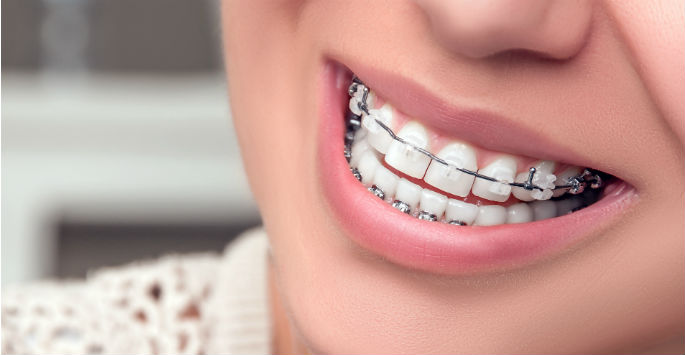Damon Braces: Complete Guide

Damon Braces: Complete Guide
Dental braces are essential tools in orthodontics, helping to correct overcrowding, bite disorders, and other dental alignment issues. Beyond their functional benefits, braces also contribute to achieving a beautiful and confident smile. However, not all braces are created equal, and one innovative option to consider is these self ligating braces.
In this blog, we’ll explore how Damon braces work, how they compare to traditional braces and Invisalign aligners, and their potential benefits and drawbacks.
What Are Damon Braces/Self-Ligating Braces?
Damon braces are an advanced orthodontic system similar to traditional braces but with a key difference in how they function. Like conventional braces, they use archwires and brackets to shift teeth into alignment. However, Damon braces feature a self-ligating system, which means the wires are held in place by sliding mechanisms instead of elastic ties.
This self-ligating technology has gained popularity because some orthodontists claim it offers smoother, more efficient teeth movement with less discomfort. While these claims aren’t fully supported by scientific research, many patients find the system appealing due to its modern design and potential benefits.
Benefits of Damon Braces
These self ligating braces offer several potential advantages, though individual experiences may vary:
1. Reduced Irritation
The sliding mechanism of Damon braces is designed to allow gradual teeth movement, which may reduce pressure and irritation compared to traditional braces. This could result in less pain or discomfort for some patients.
2. Easier to Clean
Damon braces have fewer components, such as elastic ties, making them easier to clean. With fewer places for food and bacteria to accumulate, maintaining good oral hygiene becomes more manageable.
3. Fewer Orthodontic Visits
Patients using Damon braces may require fewer adjustments compared to traditional braces. Since there are no elastic ties to replace, the need for regular orthodontic visits is reduced.
How Do Damon Braces Compare to Traditional Braces?
The primary difference between Damon braces and traditional braces lies in the method of securing the wires to the brackets:
- Traditional Braces: Use elastic ties or bands to hold the archwire in place. These ties can accumulate bacteria and may need frequent replacements during orthodontic visits.
- Damon Braces: Use a self-ligating mechanism that eliminates the need for elastic ties, potentially reducing cleaning challenges and irritation.
While both systems are effective in treating common orthodontic issues like overcrowding, overbites, and underbites, some patients prefer Damon braces for their sleeker design and reduced maintenance.
How Do Damon Braces Compare to Invisalign Aligners?
Invisalign aligners are a popular alternative for those seeking invisible braces. Here’s how Damon braces stack up:
- Visibility: Invisalign aligners are nearly invisible, while Damon braces, even with clear brackets, are still more noticeable.
- Removability: Invisalign aligners are removable, making eating and cleaning easier, whereas Damon braces are fixed appliances.
- Treatment Time: Invisalign treatment is often faster for mild to moderate cases, typically lasting 12–18 months. Damon braces have a similar treatment duration to traditional braces, usually around 18–36 months.
- Cleaning: Damon braces are easier to clean than traditional braces but require more effort than removable aligners like Invisalign.
How Long Does Treatment Take?
The treatment time for Damon braces is comparable to that of traditional braces, averaging 18–36 months. Claims of faster results are unsubstantiated, as the duration largely depends on the complexity of the case and the patient’s compliance with orthodontic instructions.
If you’re seeking a quicker solution, clear aligners like Invisalign may be a better fit for mild alignment issues, as treatment can range from 12–18 months.
Is this Right for You?
Self Ligating braces are suitable for addressing a variety of orthodontic concerns, including:
- Overcrowding
- Crooked teeth
- Overbites and underbites
- Gapped teeth
However, choosing the right system depends on your specific dental needs and lifestyle preferences. Consulting an experienced orthodontist at a trusted dental clinic in Mumbai is the best way to determine whether Damon braces, traditional braces, or clear aligners are the right fit for you.








